

Amazing maize in the heart of Kenya
April 6, 2020
As part of our concerted efforts to support and encourage the next generation of Australians in study, careers and volunteering in international agricultural research, the Crawford Fund State Committees proudly support our Student Awards, which enable university students to include an international component to their studies, to travel to their host countries to research and explore their chosen topic areas and gain international agricultural research experience and expertise.
Our 2020 Student Awards in ACT, NSW and QLD have been extended due to the disruption to the university year caused by COVID-19 so check out the backgrounder and apply online before Monday 2 November 2020.
Bianca Das travelled to Kenya as part of her PhD research with the University of Queensland and the CSIRO. In Kenya, Bianca was supported by staff at the Alliance of Bioversity International and the International Centre for Tropical Agriculture (CIAT). Bianca has written the following report on her trip:
Background
Firstly, let’s clarify the question on everyone’s lips: Are maize and corn the same thing? Well, yes and no… Corn is a type of maize (Zea mays L.). For many Australians, Kiwis and North Americans, we’re thinking about sweet corn, one of the many different types of maize. In Kenya, the most common type of maize is white and starchy with waxy skin and is used to make maize flour, a staple food all over Africa.
So, this blog isn’t about the quest to decipher what corn really is, rather it’s about what I couldn’t have learnt without travelling to Kenya for my PhD research on a Crawford in Queensland Student Award. This award allowed me to see firsthand the impact of soil phosphorus deficiencies on cropping systems in sub-Saharan Africa, and build invaluable research networks and genuine friendships with the staff at the Alliance of Bioversity International and the International Centre for Tropical Agriculture (CIAT).
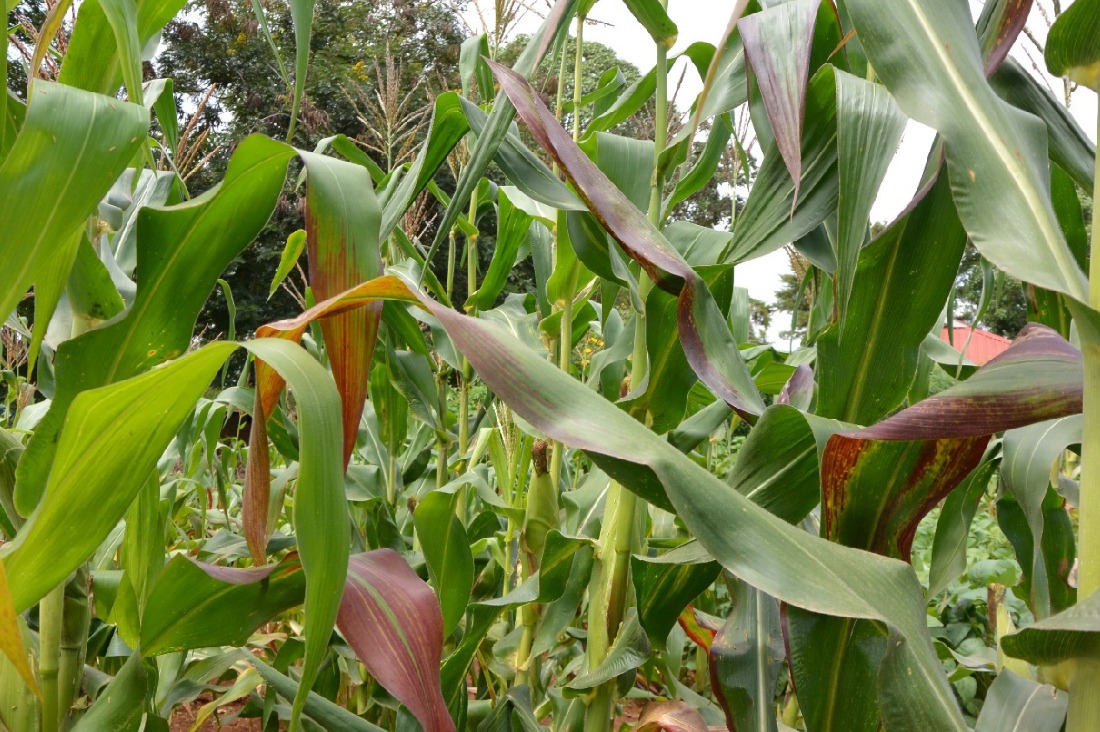
Observing, asking questions, listening, working and eating together
Walking through the trials, I got a feel for the many different treatments effects and took photos to document this. I could closely examine nutrient deficiencies in two crops I hadn’t seen up close in the field before – soybean and maize. I also learnt about the locally used legume crop called tephrosia [Tephrosia candida (Roxb.) Dc.], a green manure in rotation with maize in one of the trials to explore the potential to sequester carbon into the soil.
Along a path next to the trials, I bumped into an elderly man who lived close by. In broken English he thanked me profusely for the work I was doing. I immediately tried to explain, “Well, actually I didn’t do anything I’m just here to have a look…” but unable to speak any Swahili, I could only smile and accept the praise. I then started to think about how much value the local community placed on these trials. I later learnt these trials also serve as a demonstration facility for local farmers and stakeholders to observe and learn new practices for sustainable intensification and climate smart agriculture. I now understand that this research is critical to all facets of this community.
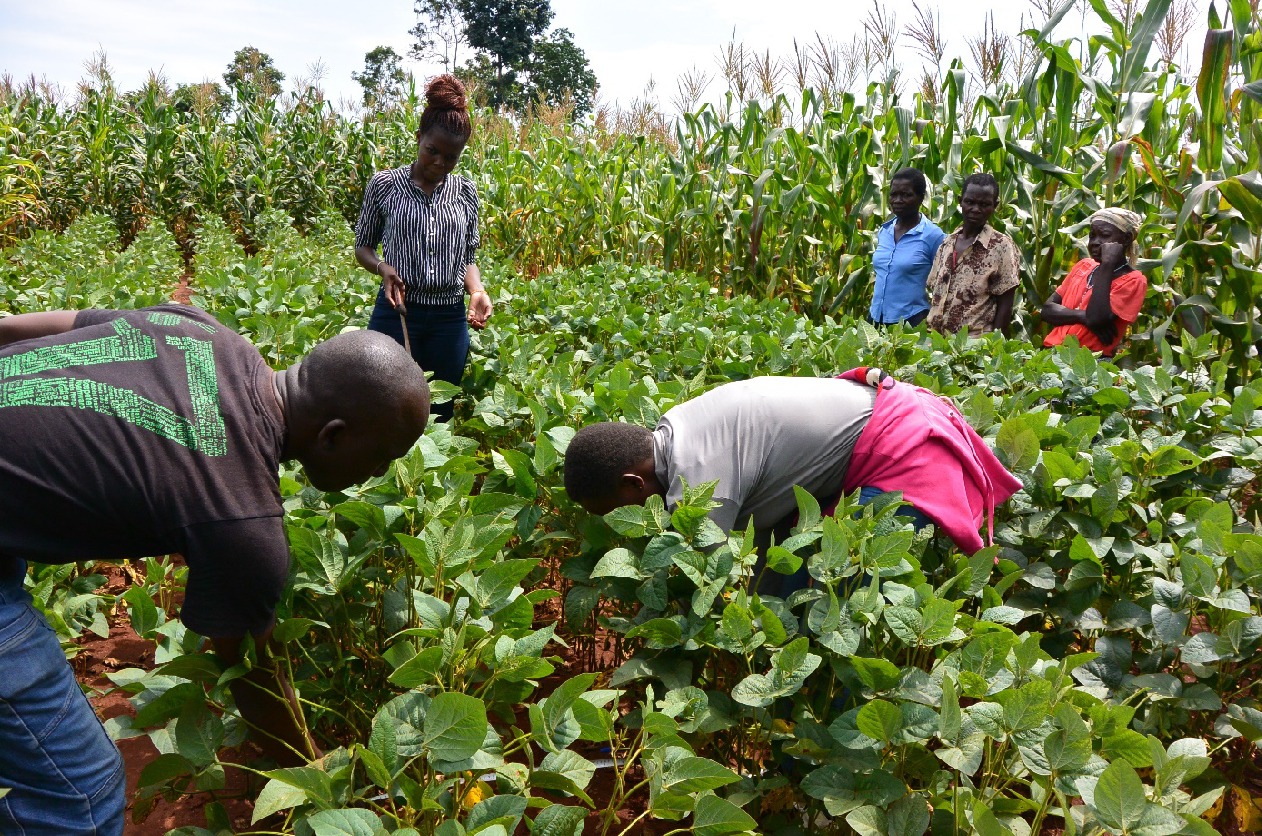
Recording field data with Peter Bolo and his colleagues helped me realise just how much work is done by hand and how this impacts the data collection and local agricultural practices. During the heat of the afternoon, school children next door sang soothing hymns, keeping us going into the early evening. After working closely with my new colleagues in the field, it was easy to feel connected and ask questions about agriculture and culture in the region. We explored topics of different types of cash crops (mainly sugar and maize), local family dynamics, and the strong cultural connection to the Christian faith, local pride and identity in this region.
Being a Kiwi, I thought I was used to a friendly culture, but Western Kenya is “next-level friendly.” One morning before we leave, I smile to security guard in the car park and jump in the ute, I am focused on the trials. He says something to Peter, half-jokingly Peter says, “There is a problem, he is asking why you did not stop to say hello.” Completely stumped by my rudeness, I hop out of the car to shake his hand and say hello. What struck me after a few days of staying in the region was the genuine kindness and warmth of the culture.
Trucks, school buses, vans and boda bodas (motorbike taxis) on the main road have a special code of overtaking one another that I don’t quite understand. Meanwhile sheep, goats and cattle casually graze weeds between small fields of maize, sugar cane, forage sorghum, banana and plantain. After crossing the equator every day, I eventually convince our driver to stop and let me take a photo.
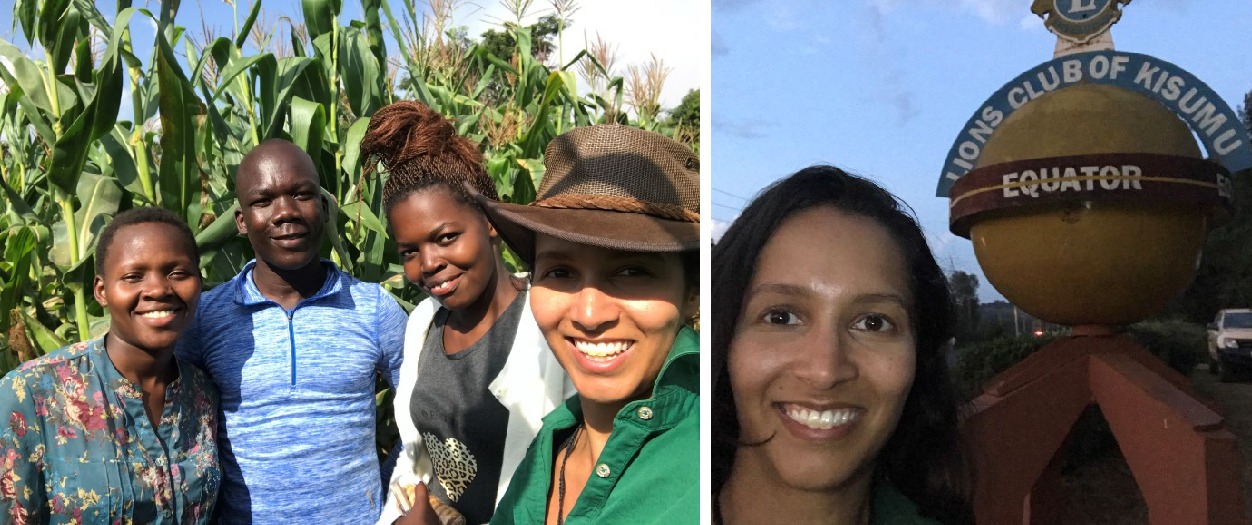
The main city Kisumu is perched on the edge of Lake Victoria, the largest lake in Africa. Visiting the markets in Kisumu was great to see the local grains, plants and fruit but more interestingly, people didn’t know how to call out to me to buy their things. Sometimes I was Wahindi and sometimes I was Mzungu which was very amusing to my colleagues. I got to taste the local maize; when boiled with salt it was waxy, starchy and bland in flavour – can’t say I liked it that much. But, the ugali (steamed maize flour dough), I particularly enjoyed when eaten with the local fish.
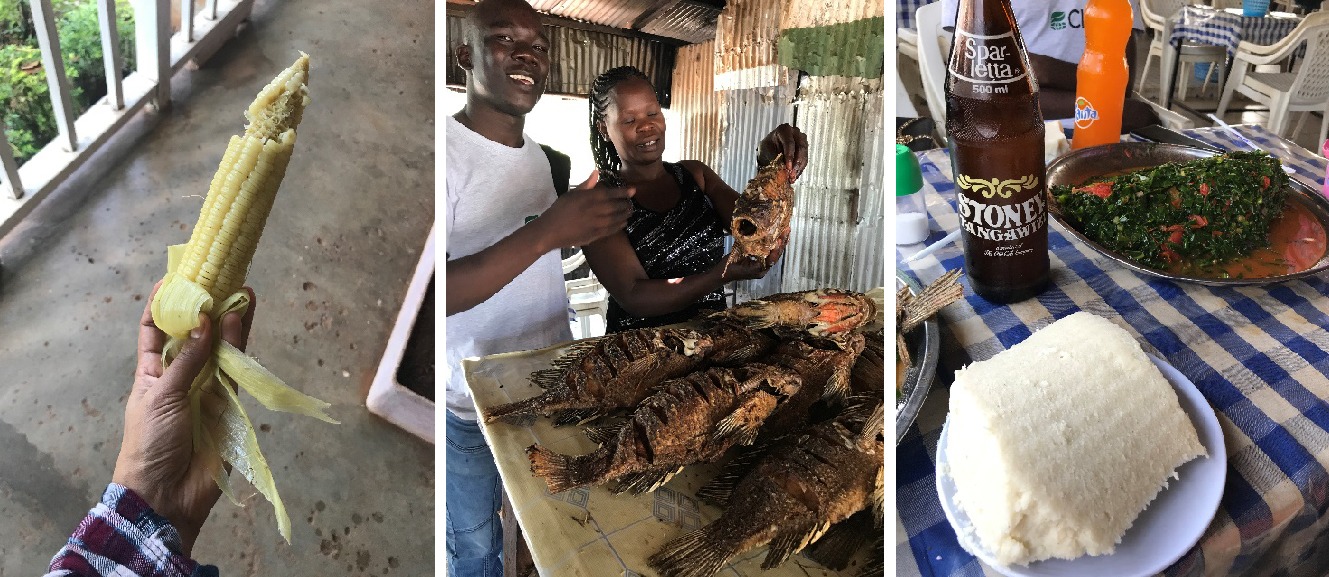
Taking opportunities in Nairobi as they arose
Upon arrival at Alliance of Bioversity International and the CIAT Regional Office for Africa in Nairobi, I was enthralled by the diversity of expertise and research activities. I spoke with experts such as Dr Job Kihara and Dr Birthe Paul who have both worked on the trials for many years and are usually very busy and often travelling internationally. I presented my thesis work to staff to gauge their perspective on my work and explain what information I needed to model the trials. We then worked together to sift through the files of existing data to locate the information I needed. I would not have been able to gain access to this data without actually being in Nairobi.

To “value add” to my trip, I joined a group visiting the Thika Field trial, about 40 minutes’ drive north of Nairobi. This trial focused on mixed cropping systems for maize-legume-pasture rotations for a large dairy project where the effects of drought were evident: a stark difference to Western Kenya where annual rainfall is 1700 mm. I also visited two local laboratories that Alliance of Bioversity International and CIAT collaborate with, the International Livestock Research Institute (ILRI) and a local commercial lab CropNuts. This was an excellent opportunity to share contacts and establish collaborations, should I get the opportunity to return and collect field data at a later stage during my PhD.
Summary
In just three weeks, I gained a snapshot of life in Kenya which gave me firsthand understanding of phosphorus deficiencies in the field, granted me the ability to source the data I needed to build my PhD project, showed me the global significance of Alliance of Bioversity International and CIAT’s long term trials in Western Kenya, and allowed me time to connect with researchers and build quality networks for my career in international agriculture.
Lessons learnt:
- The Western Kenya long-term trials are globally significant for research in agriculture, particularly for testing out new practices in nutrient management, conservation agriculture and climate change adaptation research. They have a positive impact on local community by providing knowledge sharing, collaboration and employment.
- Agricultural modelling is not just theoretical. Visiting the trials added context and meaning to the spreadsheets I work with. I need to include a “so what?” aspect to make my PhD research relevant for sub-Saharan Africa by incorporating manure and mixed intercropping systems in small holder systems.
- A backup database system and a legacy mindset for data is key for research projects to continue to provide new research after they are finished.
- When you’re working in a new country and culture, it is important to ask open questions, listen, asking more questions and listen again. Don’t just make “western” assumptions.
- Offer your expertise in any way possible to help collaborate and form new projects. Be generous, share contacts and knowledge. Be clear with your communication, intentions, and goals.
Seek to understand, not be understood. Learn to navigate new organisational structures, projects and funders. Learn some of the language, even if you have a short time. Learn about the ambition and drive of the younger generation. Visit local museums and try to understand the history of the people and how it relates to agricultural activities.
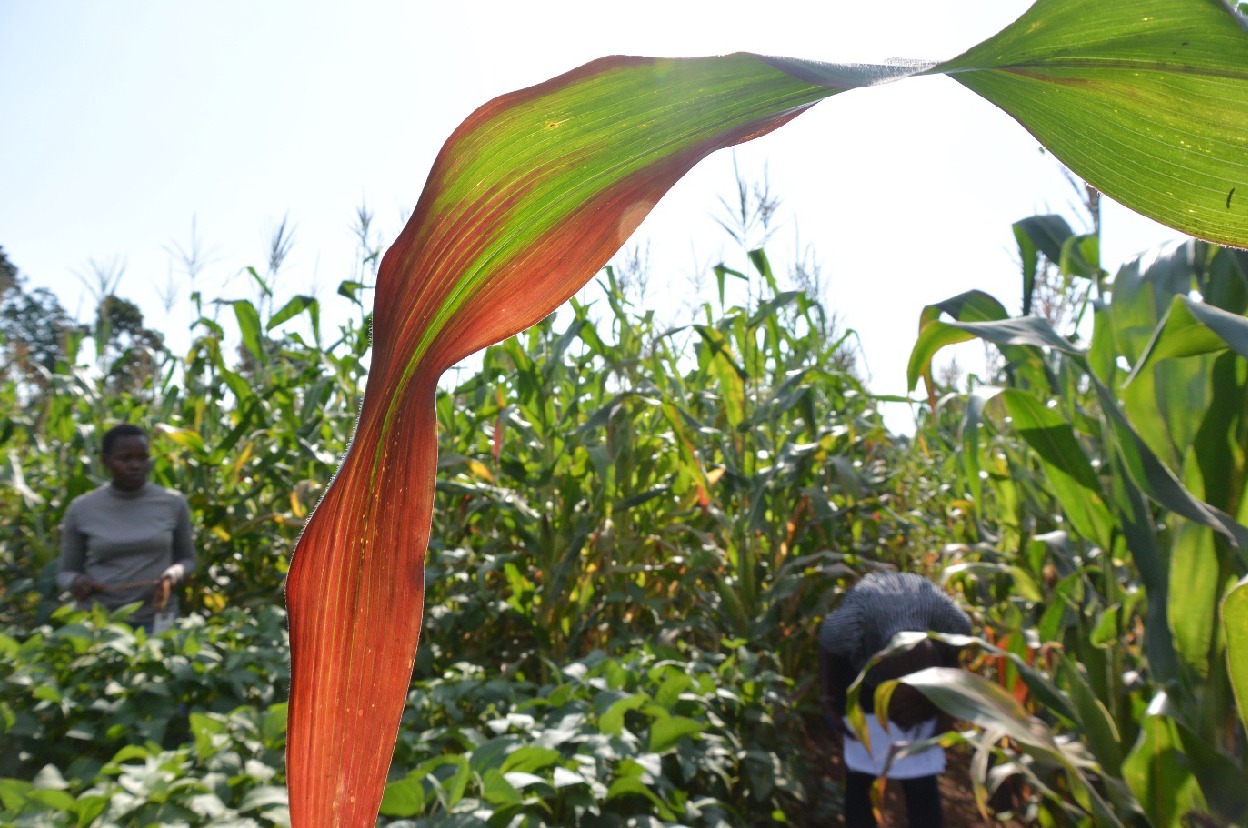




 0
0